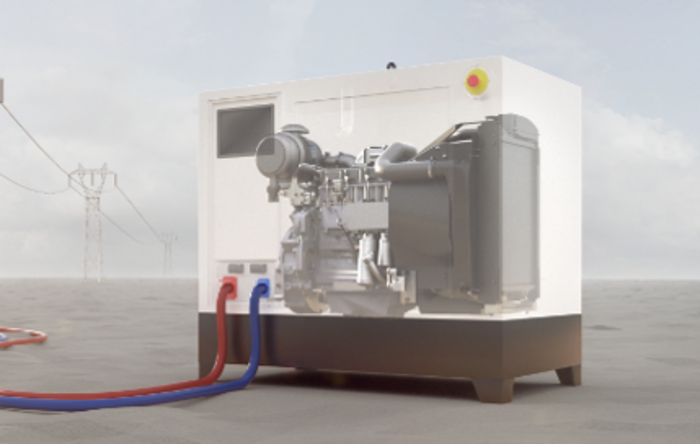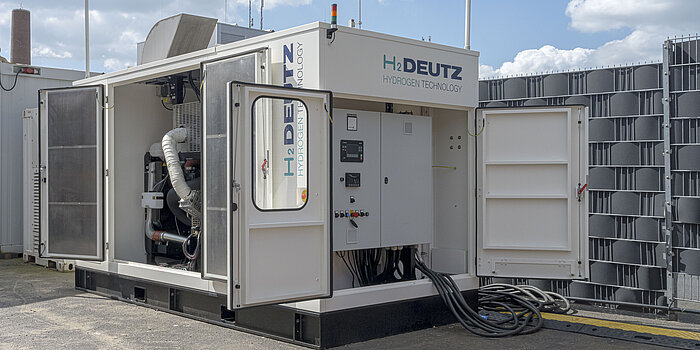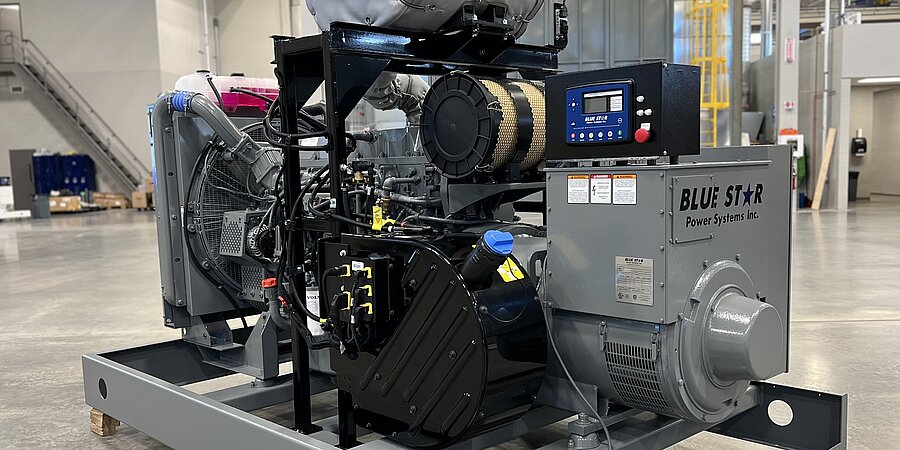
DEUTZ Power Generation Solutions
Keeping your
business
powered up
Introducing our DEUTZ power generation solutions, designed to meet the growing energy demand of our world. Designed specifically to suit your region’s unique environment. Emergency power for critical infrastructure, a prime electricity source in remote locations or temporary construction sites: DEUTZ provides complete solutions for local power generation and decentralized energy supply activities.
Classic GenSets
Integrating advanced technology and state-of-the-art components, our Deutz Power Solutions ensure the world keeps moving by providing reliable power generation and storage solutions for applications. Available in two variants – Open Frame and a Sound-Proof System.
Using high-efficient internal combustion engines, our classic genset product range brings a proven technology reliability as the perfect fit for your sector. As backup power during emergencies or as a primary source of electricity, DEUTZ Power Solutions offers optimal performance and energy efficiency.


DEUTZ H2 GenSets
DEUTZ hydrogen gensets run on hydrogen and can be fueled with green hydrogen, if availbale. The integration from a diesel to a hydrogen engine within the genset is simple and straighforward.
Knowledge Hub
A generator set (Genset) combines an internal combustion engine and an electrical generator (alternator) mounted together to form a single piece of equipment.
It is an electromechanical machine used to produce an AC electrical current from the thermal energy of combustion through a double-cascade converter: from thermal energy (introduced by diesel fuel) to mechanical energy by means of reciprocating motion (engine rotation) and from mechanical energy to electric energy (rotation of the alternator).
1- Island mode operation
In this example, the Genset is the only source of energy for the user system.
The scope of supply is any location where there is no public distribution network or where the user has decided to directly produce the energy required for their own needs and, if applicable, exploit the heat emitted by the generator.
Typical examples are self-powered equipment and those used on work sites.
2-Generator operation during a power cut to the distribution network
The user system is normally supplied by the distribution network. However, Gensets which activate automatically after a power cut are used to limit any problems or material and financial damage caused by a black-out (e.g. data processing centres, hospitals, industrial facilities, etc. operating 24/7).
The Genset is electrically connected to an Automatic Transfer Switch (ATS) panel which automatically switches available power supply sources (Genset or network) according to the logic controller settings.
Depending on the type of control panel assembled on the Genset, this can operate a short parallel cycle with the network upon its return, to eliminate possible blackout recurrence.
3-Parallel mode operation
In parallel mode between Gensets in island mode operation, Gensets are the only source of energy, but several units are used in parallel. This solution is usually used due to:
- the need for continuity of service; if one Genset fails or maintenance is being carried out on a Genset, the load is still partially or totally guaranteed
- the load to be supplied requires more power than can be achieved by a single unit
- a significant difference between average and peak loads, which requires the use of two or more smaller Gensets in parallel to absorb peaks (they can normally operate alternately).
In these circumstances, it is also possible to use several Gensets in parallel mode and as an emergency backup (without operating in parallel with the network).
Parallel mode with the network (long term or temporary)
In this example, Gensets can operate in parallel mode and with the distribution network. This arrangement is typically used to compensate for absorption peaks not supported by the network or to achieve energy exchanges with the network distributor, in the case of self-powered units.
A diesel genset, or diesel generator set, combines an internal combustion engine and an electrical generator (alternator) into a single unit. The electro-mechanical machine produces alternating current from the thermal energy of combustion through a double cascade converter. The thermal energy introduced by the diesel fuel is converted into mechanical energy as the engine rotates, and the mechanical energy is converted into electrical energy.
The power classes of generating sets are defined in ISO8528. To comply with the above standard, in addition to the basic machine and manufacturer's data, each genset must have a nameplate listing both electrical and mechanical quantities, as well as environmental reference parameters.
Basic electrical quantities of the generator: Current and voltage
Electric current is measured in amperes [A] and, in physics and electrical engineering, represents the electric charge passing through a cross-section of wire in a unit of time. Electric current can be either direct or alternating. Generators normally produce alternating current.
Voltage is measured in Volts [V] and is the difference in electrical potential between two points. Voltage is produced by the separation of charges and it is the electromotive force that produces current. Electrical power is measured in watts [W] and is defined as the electrical work done by an electric field on an electrical load in a unit of time; for simplicity, it is expressed by multiplying current by voltage, or P=I*V.

DEUTZ Blue Star Power Systems
DEUTZ is accelerating its efforts to build up our decentralized energy supply activities under the Dual+ strategy.
Learn more